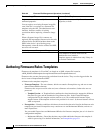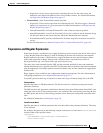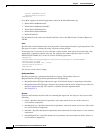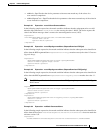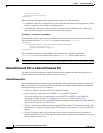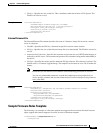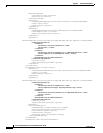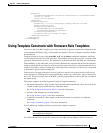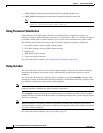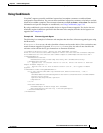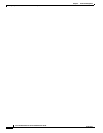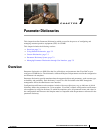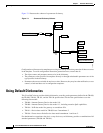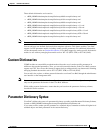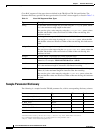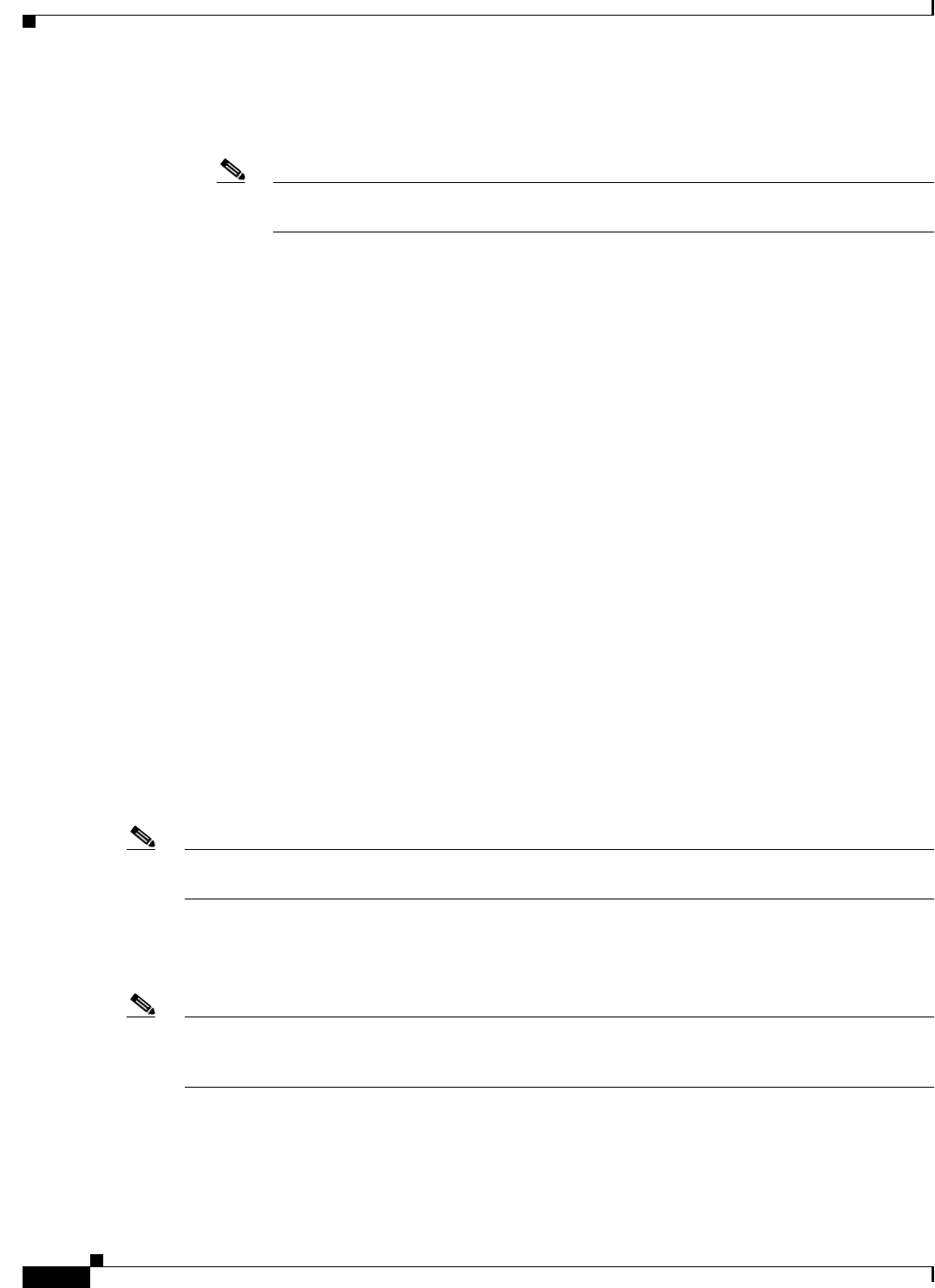
6-14
Cisco Broadband Access Center 3.8 Administrator Guide
OL-27172-01
Chapter 6 Firmware Management
Using Template Constructs with Firmware Rule Templates
• <BPR_HOME>/rdu/templates/cwmp/schema/FirmwareTemplateSchema.xsd
• <BPR_HOME>/rdu/templates/cwmp/schema/CommonTemplateConstructs.xsd
Note The XML namespace of the Cisco BAC Common Template constructs is defined as
xmlns:tc='urn:com:cisco:bac:common-template'.
Using Parameter Substitution
Values from the Cisco BAC property hierarchy are substituted into a template by using the VAR()
construct, in order to produce firmware rules specific to a given device. The VAR() construct can appear
in an XML element value or element attribute. It can also be used to substitute full or partial values.
The following list describes the constructs that Cisco BAC supports for parameter substitution:
• Cisco BAC property value into XML element content
• Cisco BAC property value into XML element attribute
• Default value
• XML partial element content
• Values with special characters
For syntax and specific examples, see Using Parameter Substitution, page 5-16.
Using Includes
You use Include files to build a set of reusable template snippets. These files are useful for defining
options that are common across many classes, without having to duplicate the options in several
templates.
You can include the content of a particular file to a template by using the tc:include construct. After
inserting the content of included files into the host template, the Parameter Dictionary specified in the
host template, validates the content of the resulting template.
Note If included templates use objects and parameters that are not defined in the same dictionary as the host
template, parameter validation fails during instruction generation.
The tc:Include element specifies the href attribute, where href identifies the name of the Cisco BAC
template file that is included in the host template. Use double quotation marks (") when using an Include
directive in a template.
Note When one template is included in another, the parameter dictionary and prerequisite tags from the
included template are ignored. The schema of the firmware template enforces the location of an Include
tag within a firmware template.
For syntax and specific examples, see Using Includes, page 5-17.



